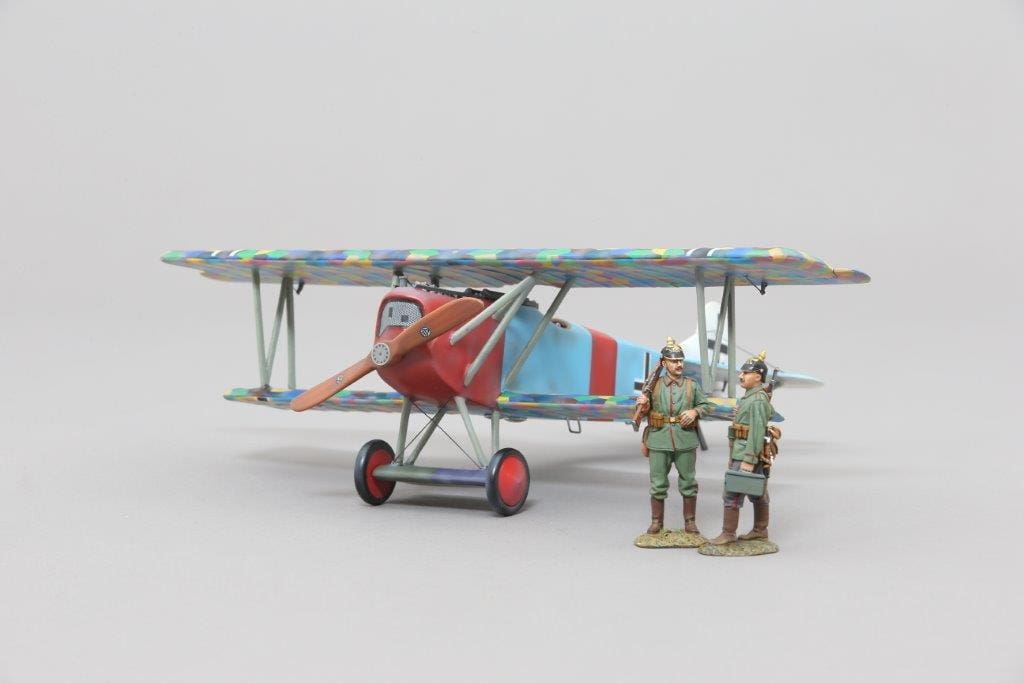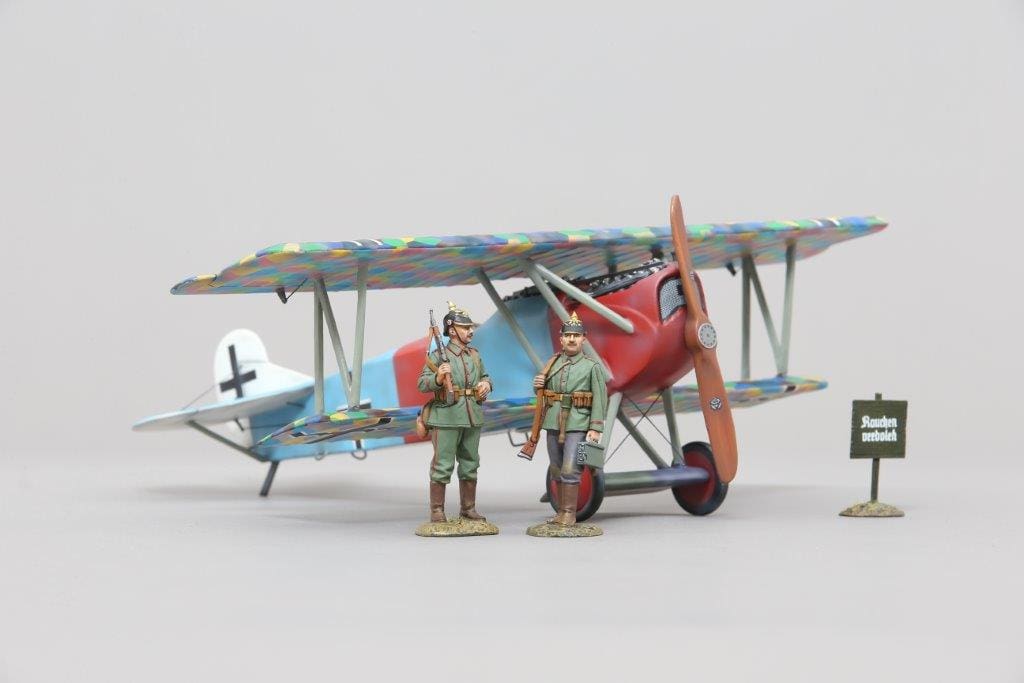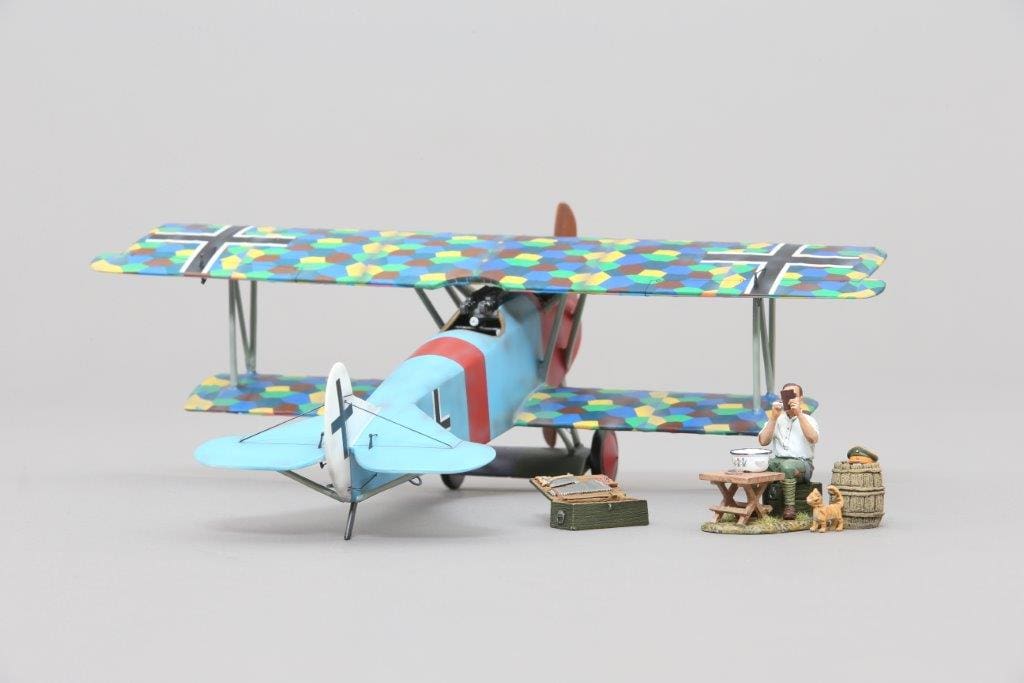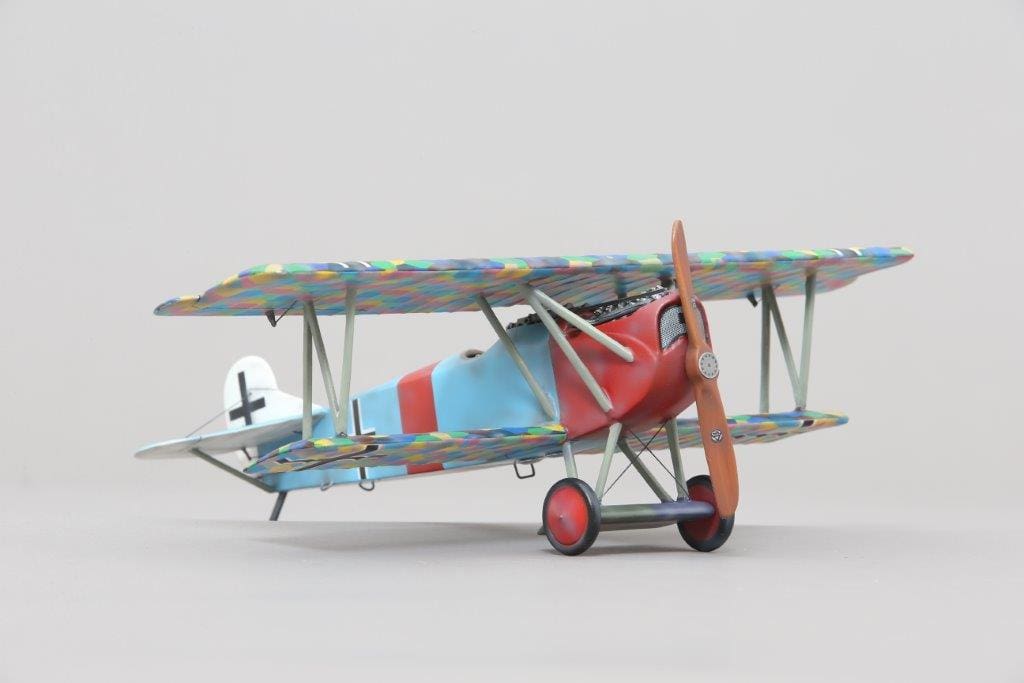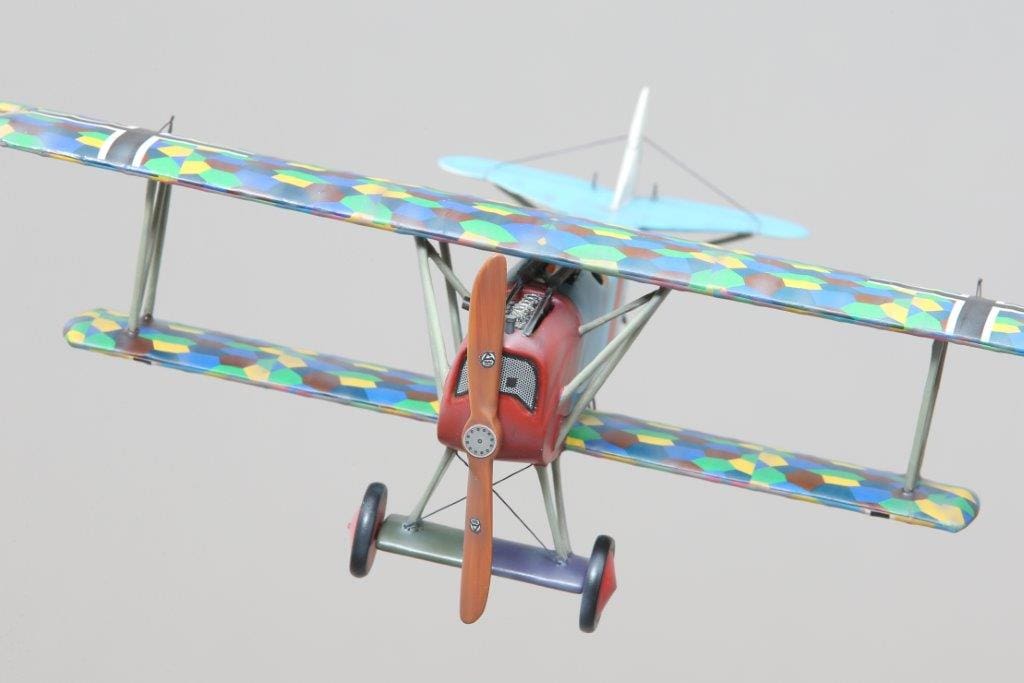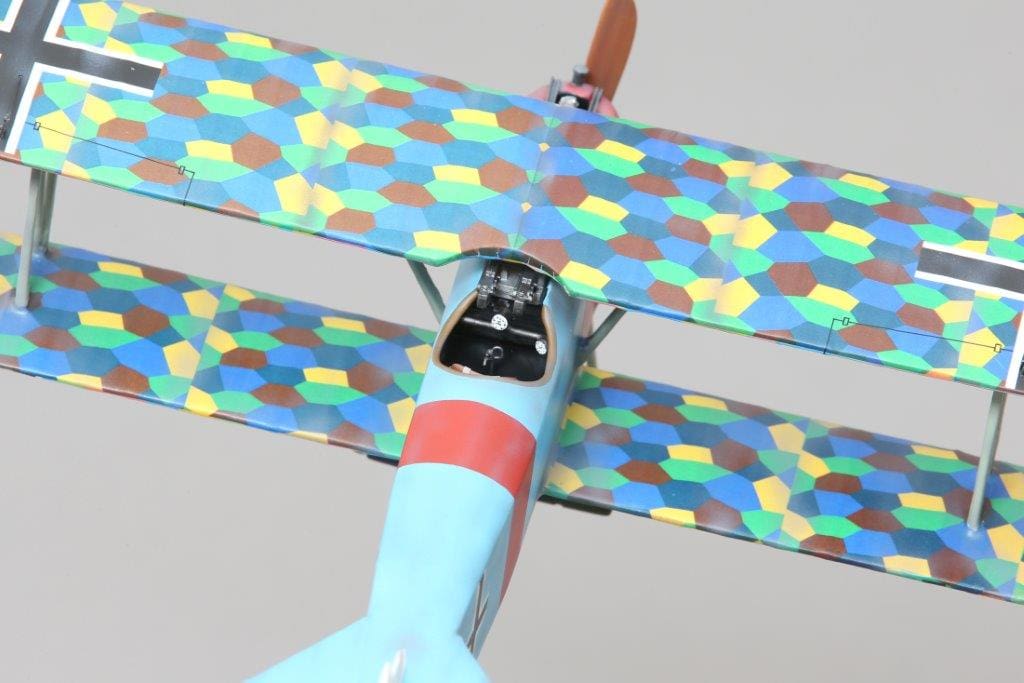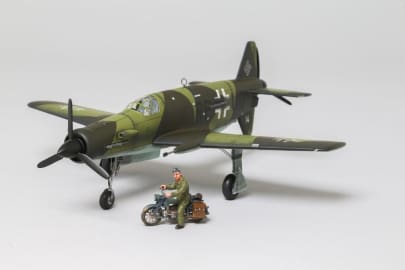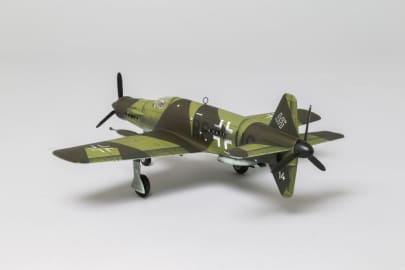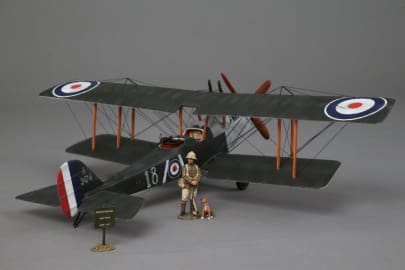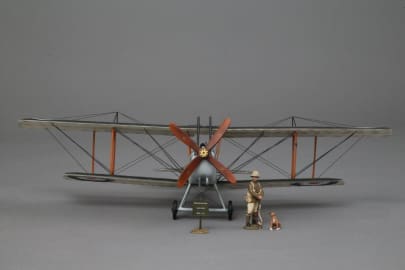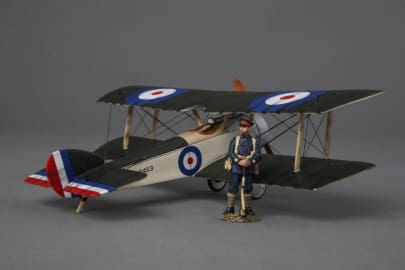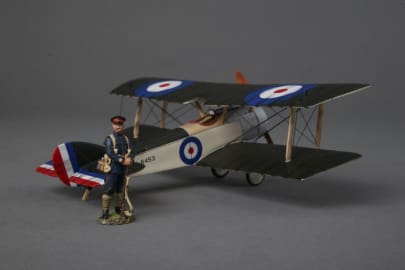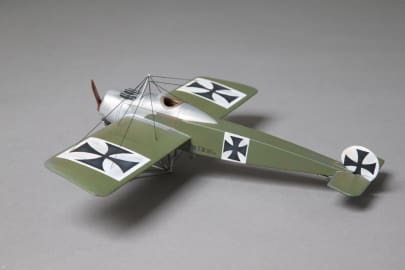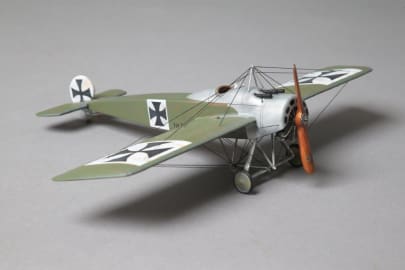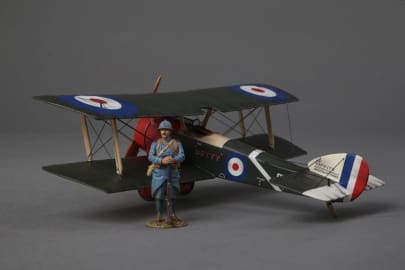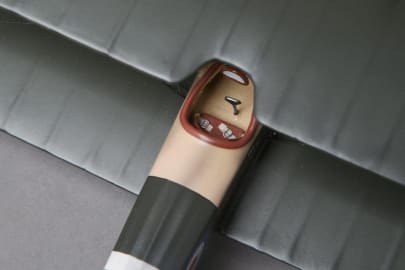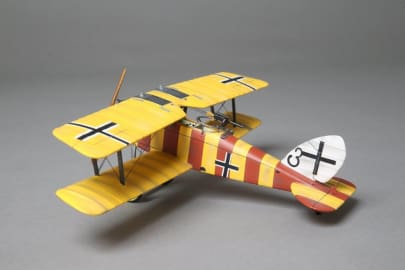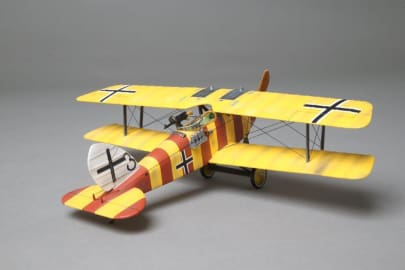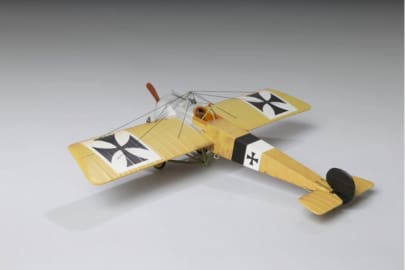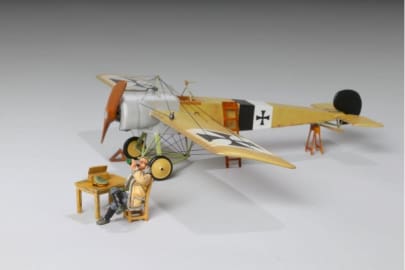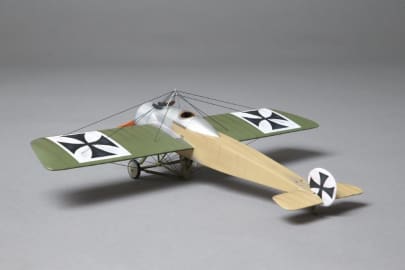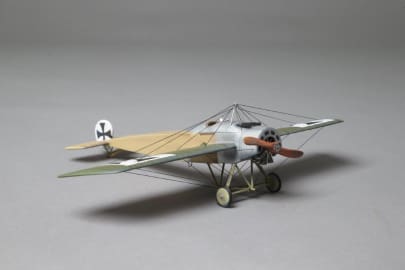- Free shipping available on orders over £100 (UK) £250 (EU) and $300 rest of the world
WOW180 Fokker D.V11
Out of Stock
Description
Description
The Fokker D.VII was a German World War I fighter aircraft designed by Reinhold Platz of the Fokker-Flugzeuwerke. Germany produced around 3,300 D.VII aircraft in the second half of 1918. In service with the Luftstreitkfafte, the D.VII quickly proved itself to be a formidable aircraft. The Armistice ending the war specifically required Germany to surrender all D.VIIs to the Allies. Surviving aircraft saw much service with many countries in the years after World War I. The D.VII entered squadron service with Jasta 10 in early May 1918. When the Fokker D.VII appeared on the Western Front in April 1918, Allied pilots at first underestimated the new fighter because of its squarish, ungainly appearance but quickly revised their view. The type quickly proved to have many important advantages over the Albatros and Pfalz scouts. Unlike the Albatros scouts, the D.VII could dive without any fear of structural failure. The D.VII was also noted for its high manoeuvrability and ability to climb at high angles of attack, its remarkably docile stall and reluctance to spin. It could literally “hang on its prop” without stalling for brief periods of time, spraying enemy aircraft from below with machine gun fire. These handling characteristics contrasted with contemporary scouts such as the Camel and SPAD, which stalled sharply and spun vigorously. Several aircraft suffered rib failures and fabric shedding on the upper wing. Heat from the engine sometimes ignited phosphorus ammunition until cooling vents were installed in the engine cowling and fuel tanks sometimes broke at the seams. Aircraft built by the Fokker factory at Schwerin were noted for their lower standard of workmanship and materials. Despite faults, the D.VII proved to be a remarkably successful design, leading to the familiar aphorism that it could turn a mediocre pilot into a good one and a good pilot into an ace. Manfred Von Richthofen died days before the D.VII began to reach the Jagdstaffeln and never flew the type in combat. Other notable pilots, including Erich Löwenhardt and Hermann Göring, who quickly racked up victories and generally lauded the design. Aircraft availability was limited at first but by July there were 407 in service. Larger numbers became available by August, when D.VIIs achieved 565 victories. The D.VII eventually equipped 46 Jagdstaffeln. When the war ended in November, some 775 D.VII aircraft were still in service. Our 1/30 scale variant was one flown by Ace Paul Strahle an Ace with 15 or so victories to his name, the model comes with a free display mat from our current collection subject to availability and is limited to 8 in number worldwide. There is no free shipping on our warbirds and the price shown of $599 includes an additional cost for shipping worldwide, for a more bespoke shipping quote please email us at welcome@www.jumpthegunn.co.uk at your earliest convenience.

